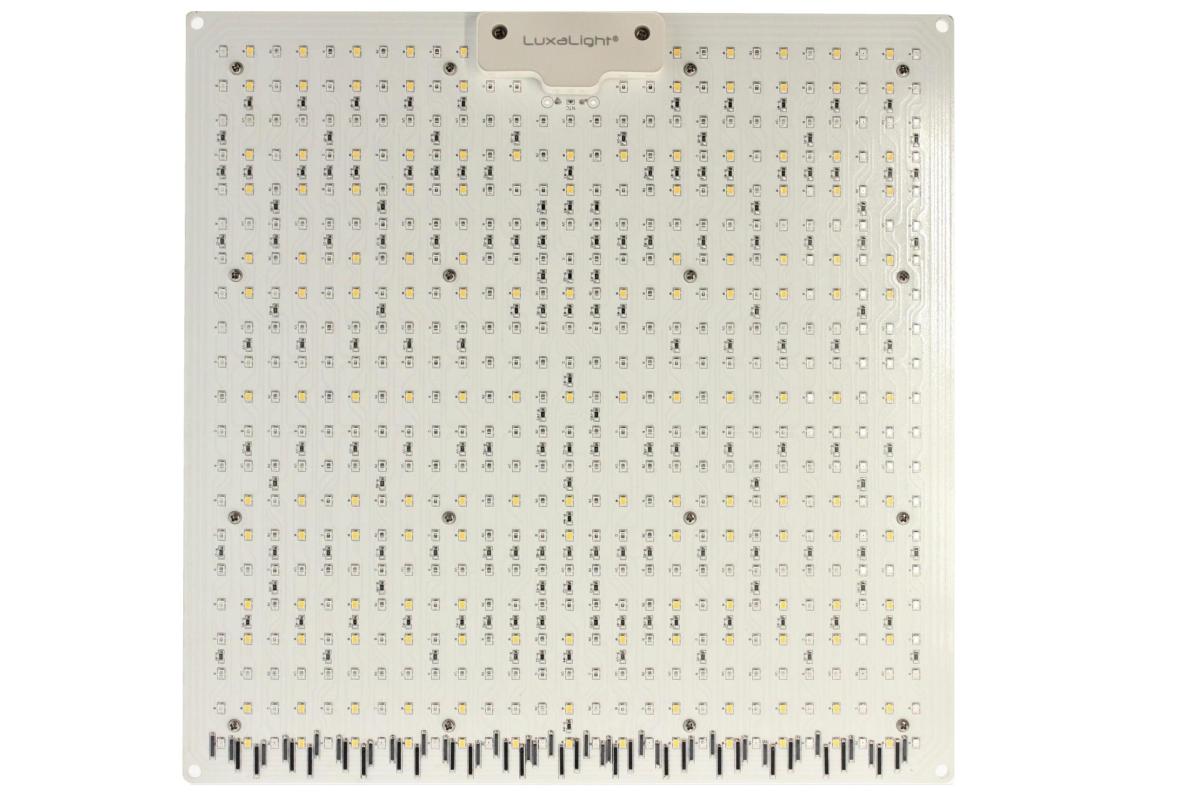LuxaLight Aluminium Science Panel White, Green, Blue, Far Red, Deep Red, UV-A 365nm protected ( 24V, 2835, 630 LEDs, IP64)
Technical specifications
Beta value: 3950
Product description
The LuxaLight Aluminium Science Panel IP64 is designed for researchers and engineers who require precision and versatility in their light and radiation settings. This high-performance science board is equipped with 630 LEDs, distributed across six specific wavelengths:
- White (4100-4300K)
- Green (515nm)
- Blue (450nm)
- Deep Red (650nm)
- Far Red (730nm)
- UV-A (365nm)
With 78 UV-A LEDs, 82 deep red LEDs, 82 far red LEDs, 85 blue LEDs, 80 green LEDs, and 151 white LEDs, the board offers a wide range of possibilities for various applications.
Key Features:
Six separately adjustable wavelengths: The ability to control each wavelength independently, which is essential for experiments requiring detailed control over light and radiation variables.
NTC sensor in combination with MaNima Pollux: The standard NTC sensor operates only in combination with the MaNima Pollux controller to achieve maximum radiation and light intensity. The NTC sensor monitors temperature to maintain the maximum operating temperature and enable the highest possible radiation.
In combination with MaNima Pollux: By using the MaNima Pollux controller, industrial applications can enable pulsing, allowing precise control over intensity and radiation pulses for specific processes and experiments.
Aluminum PCB with IP64 protection: The board is resistant to humid environments thanks to the aluminum PCB and silicone film layer, making it suitable for use in various research environments.
Applications in Horticulture:
Plant Growth: Supports photosynthesis and promotes healthy plant growth by providing specific wavelengths of light essential for plant development.
Insect Research: Specific wavelengths, such as UV-A, can be used to attract or study insects in controlled environments.
Seaweed Research: Far-red and blue light stimulate seaweed growth, which is essential for ecological research and commercial applications in biotechnology.
Medical Research: UV-A radiation is commonly used for sterilization, microbiological research, and treatments, while deep red and far-red light are used for cell and tissue repair.
Coating Research: Specific wavelengths can be used to test the interaction of coatings with light and to study the effectiveness of UV varnish and other protective layers.
Industrial Applications:
Photopolymerization: UV-A light is often used for curing coatings, inks, and other materials in the 3D printing industry or for the manufacturing of medical and industrial components.
Quality Control in the Paint Industry: The use of far-red and deep-red light can help inspect paint coatings and identify defects that are not detectable with visible light sources.
Laser Systems: Deep red light (650nm) is used in laser technologies for medical devices and industrial applications for material processing.
Light Therapy: Far-red and deep-red light are increasingly used in the industry for treatments such as pain relief, wound healing, and skin rejuvenation.
Biotechnology and Pharmaceutical Research: The use of specific wavelengths of light in research on cells, DNA, and molecular processes plays a crucial role in laboratories and industrial biotechnological processes.
The board can be powered by a standard constant voltage power supply. For complete control over the settings, it is recommended to combine the LuxaLight Science Panel with the MaNima Pollux controller.
Given the variety of research and industrial applications, we advise you to contact one of our engineers for tailored advice. We are happy to assist you in choosing the right setup for your specific goals.











